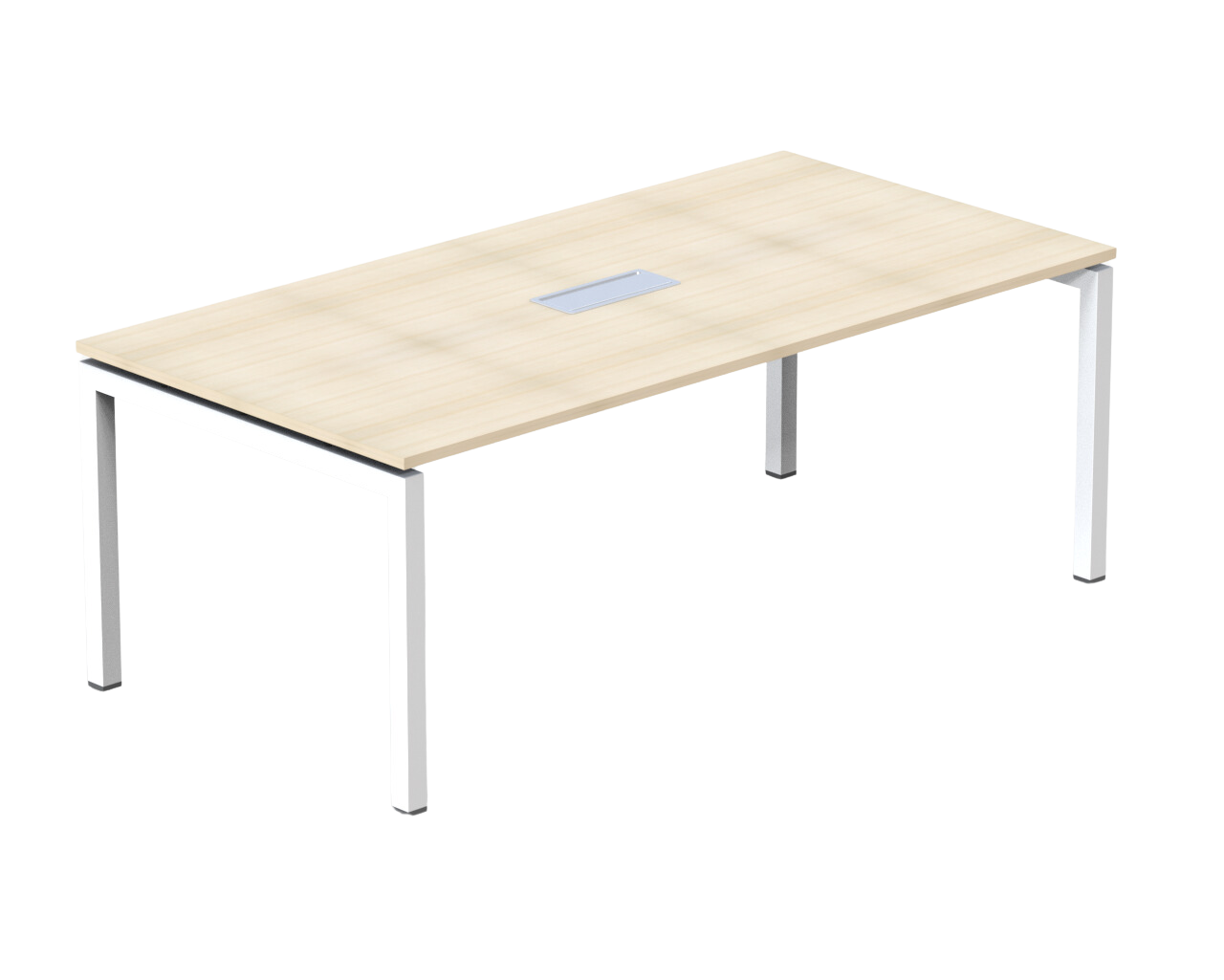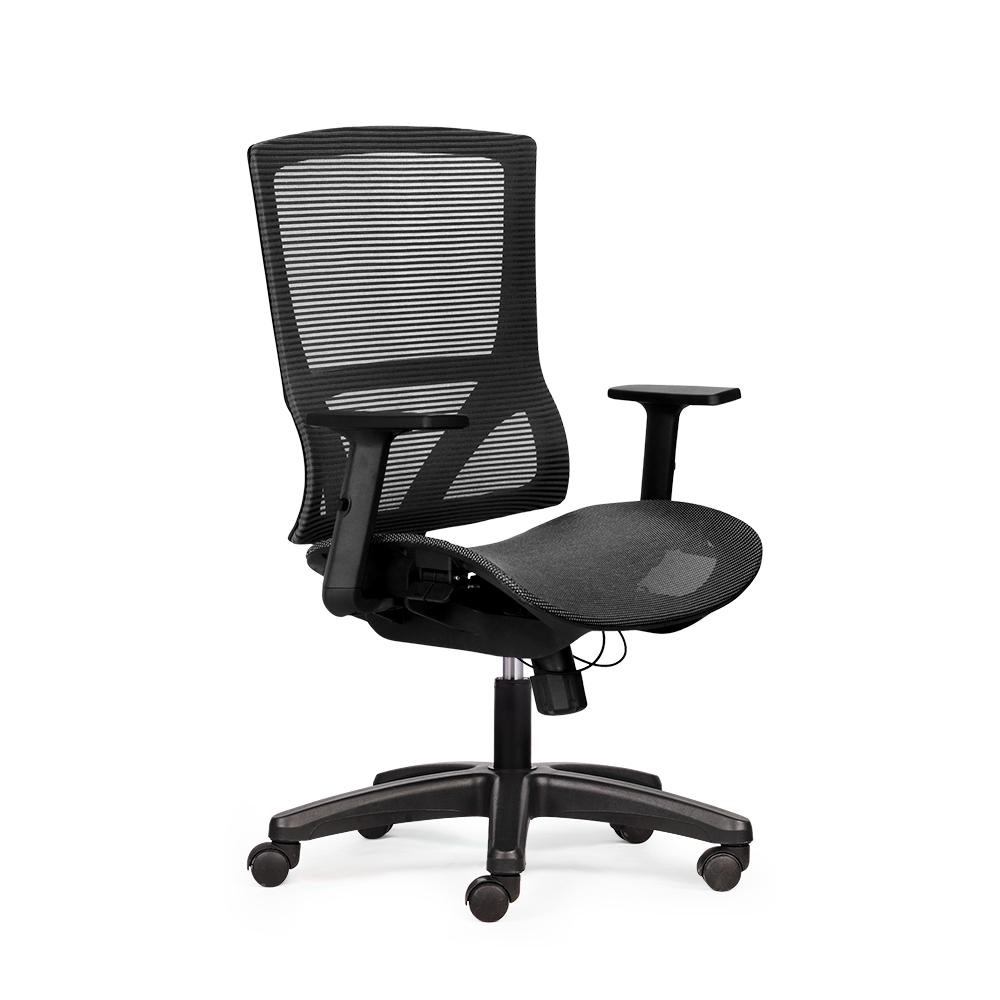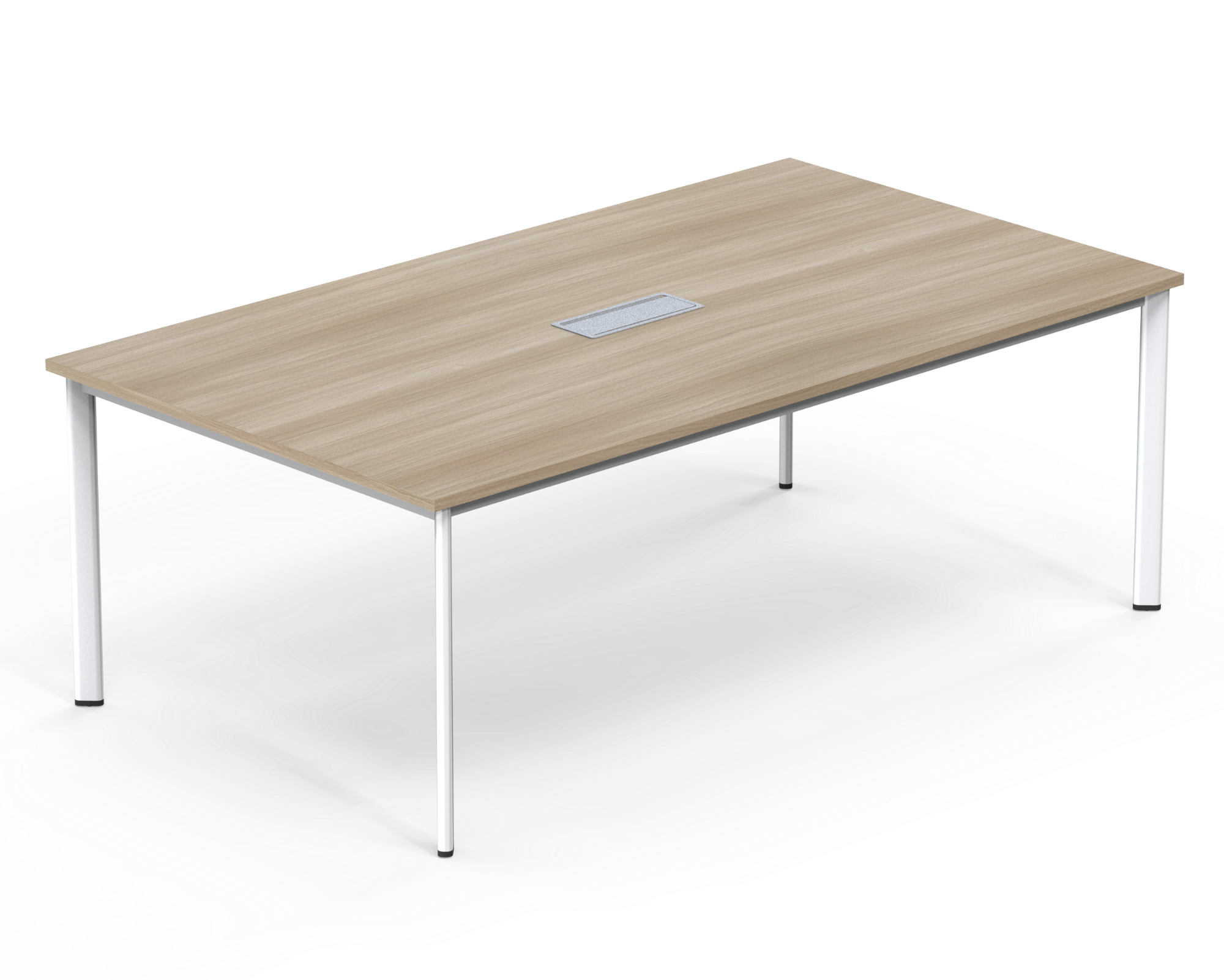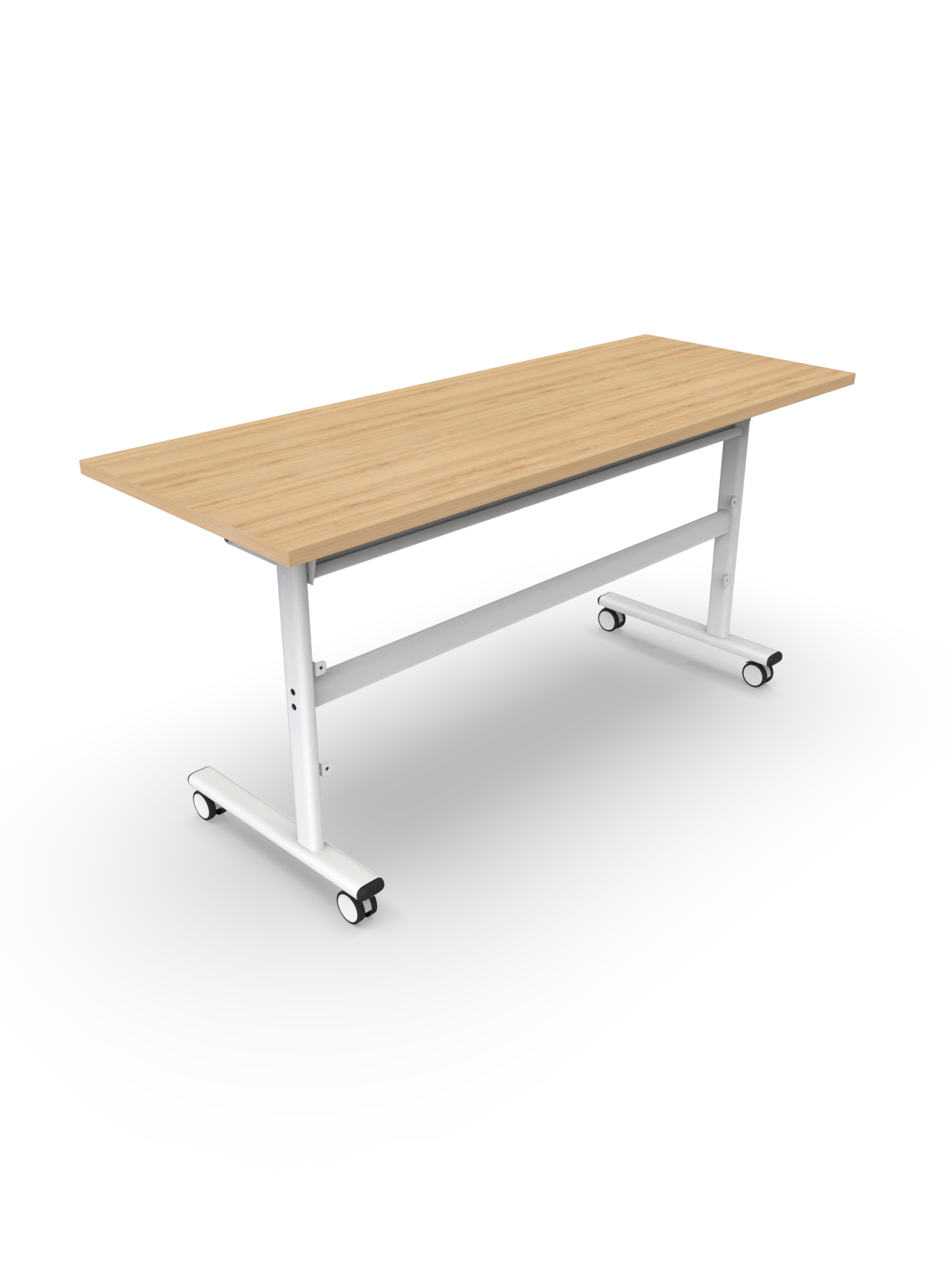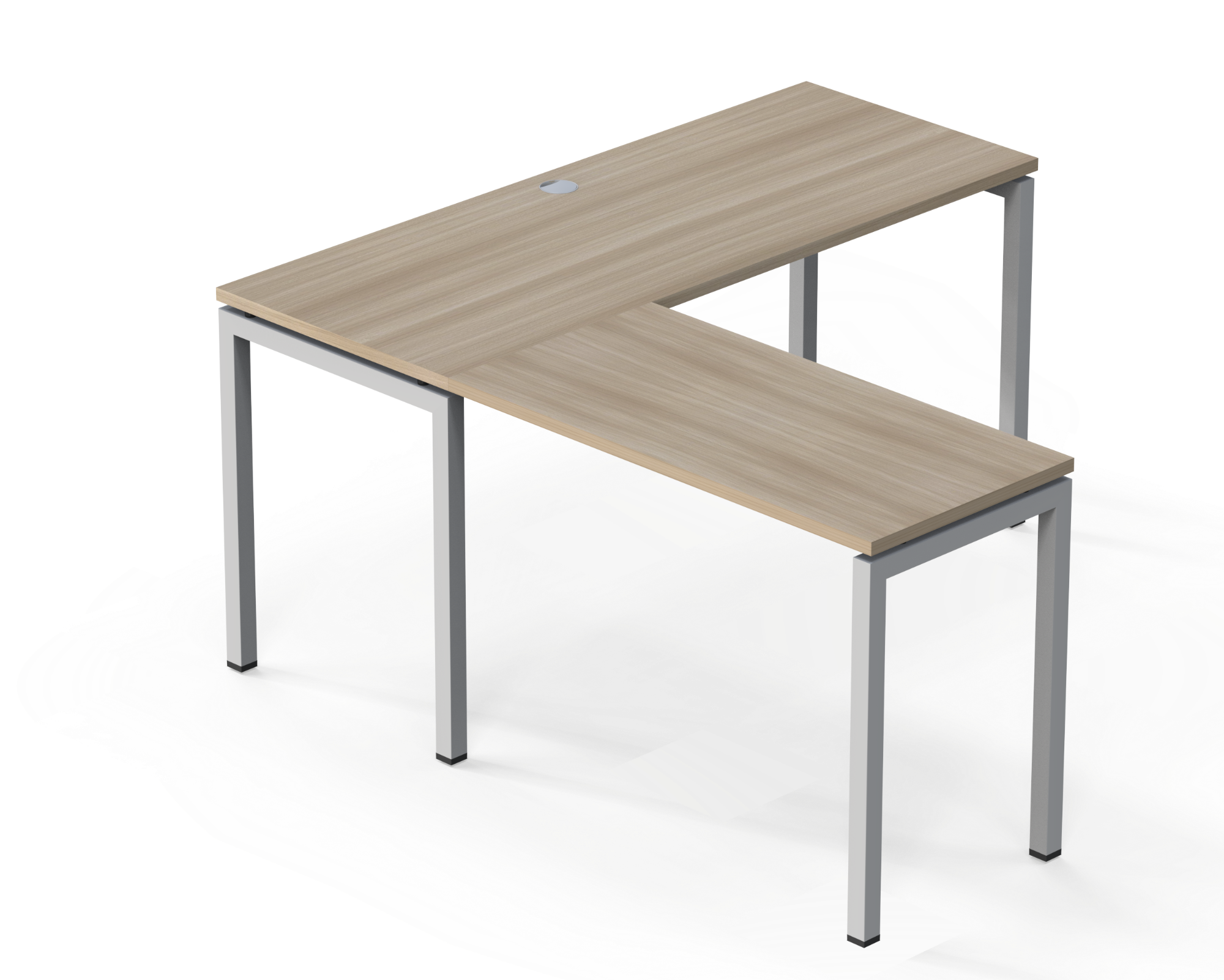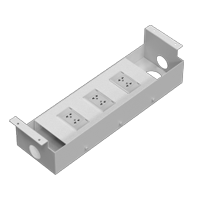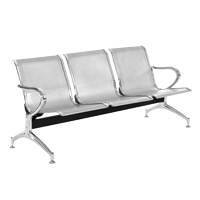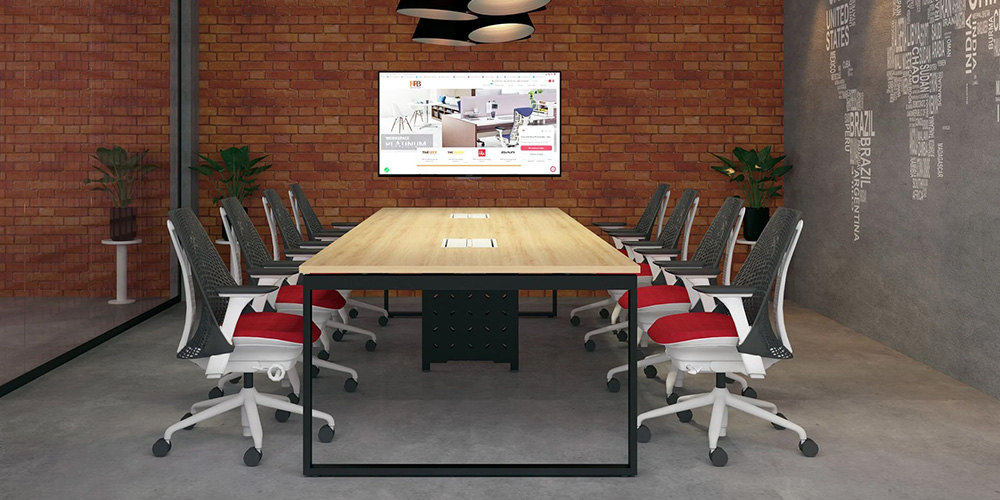
Top 5 Modern Conference Tables – Perfect for Every Office Design Concept
- 1. The importance of a conference table in office design
- 2. Top 5 conference table models for every office concept
- 3. Key criteria for selecting the right conference table
- 4. Emerging trends in conference table design (2024–2025)
- 5. Benefits of choosing conference tables from The Mia
- 6. How conference tables influence workplace culture
- 7. Conclusion
In today’s workplace, the meeting room is not only a space for team discussions but also a strategic hub that represents the company’s culture, brand, and professionalism. A well-chosen conference table is more than just functional furniture—it acts as the central element that ties together the design language of the office. Whether the office style is minimalist, contemporary, or luxury-oriented, selecting a table that complements the interior concept can significantly improve both visual appeal and usability.
This article highlights the top 5 conference table models that are currently most popular for modern office designs. We will also explore design criteria, current trends, and the added value these tables bring to businesses.
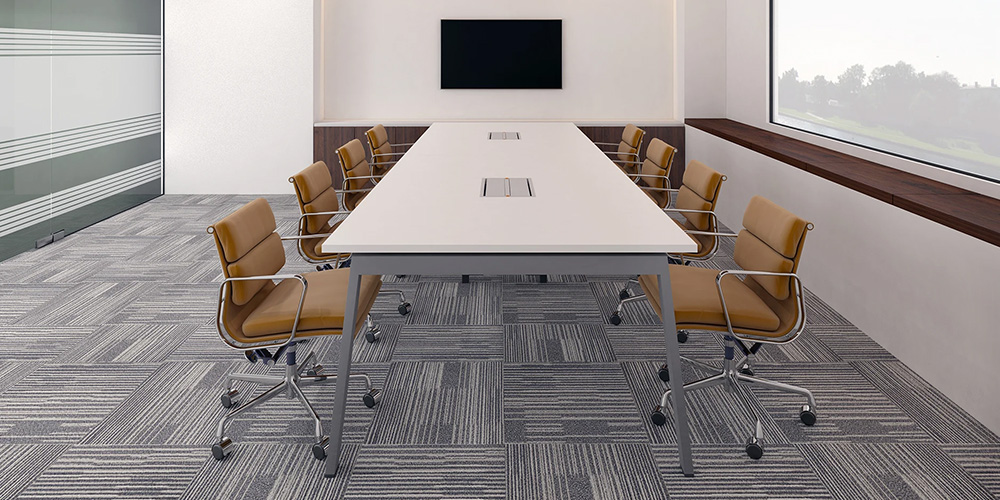
1. The importance of a conference table in office design
1.1. Shaping the overall design style
A conference table is often the largest piece of furniture in a meeting room. Its size, material, and color strongly influence the room’s visual balance and overall style. A poorly chosen table—whether too large, too small, or out of sync with the office concept—can make the room feel awkward and unprofessional. Conversely, the right table enhances harmony, reflects the brand’s identity, and creates a strong design statement. For example, tech startups may prefer sleek steel-frame wooden tables for a fresh, youthful look, while established corporations often choose veneer or stone-top tables to project authority and prestige.
1.2. Supporting functionality and user experience
Modern workplaces demand more than just a surface to sit around. Today’s conference tables are expected to integrate power outlets, cable management systems, and sometimes even audio-visual tools. This ensures meetings flow smoothly without distractions from tangled wires or lack of connectivity. A thoughtfully designed table directly impacts user comfort, enabling employees and executives to focus on collaboration instead of struggling with logistics.
1.3. Enhancing brand value and creating lasting impressions
Clients and partners often judge a company’s professionalism through their experience in the meeting room. A conference table that looks refined and supports functionality sends a clear message: the company invests in both people and workplace quality. On the other hand, outdated or cluttered setups risk undermining credibility. Investing in a modern table is therefore not just about aesthetics but also about strengthening brand perception.
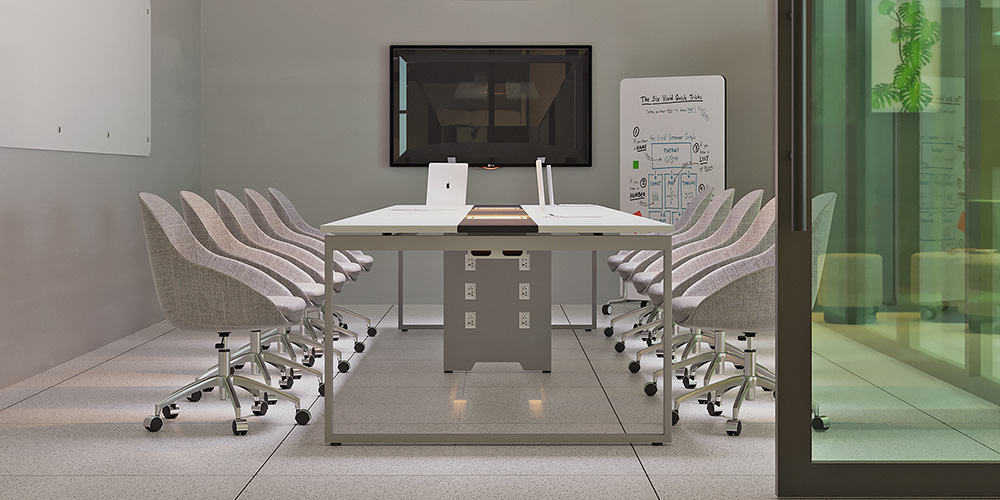
2. Top 5 conference table models for every office concept
2.1. Steel-frame wood-top tables – modern and minimalist
-
Key features: Powder-coated steel frame with a sturdy yet lightweight structure, paired with a melamine-coated engineered wood top that resists scratches and stains.
-
Best suited for: Modern, minimalist offices, tech startups, creative agencies, and flexible workspaces.
This model offers an affordable balance of durability and sleekness. It works especially well when paired with ergonomic chairs, mesh office chairs, or stackable meeting chairs. The minimalist look ensures it adapts seamlessly to different interior themes without overwhelming the space.
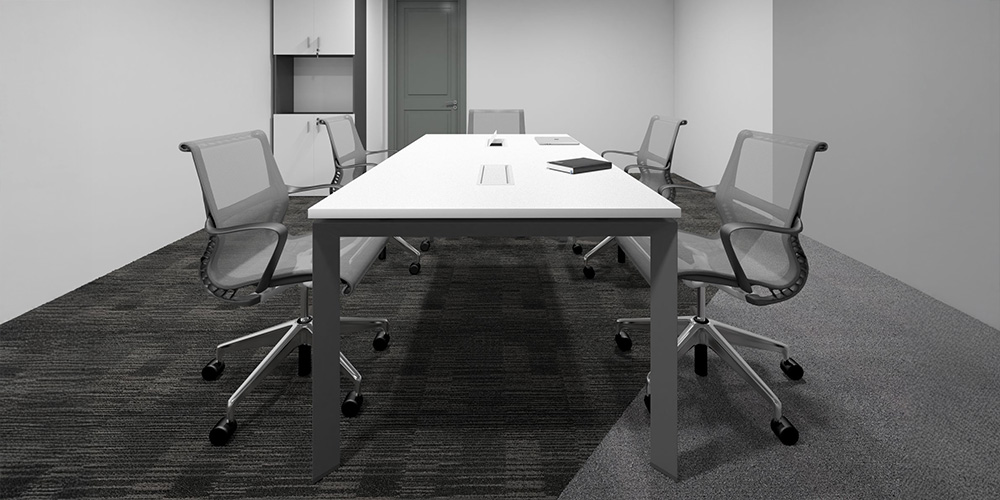
2.2. Elliptical veneer tables – sophisticated and elegant
-
Key features: Natural wood veneer top with finely crafted curves, sturdy chrome or wooden legs, and often integrated cable ports.
-
Best suited for: Executive meeting rooms, boardrooms, and corporate offices aiming for a refined aesthetic.
Elliptical tables bring a sense of flow and openness. Unlike rigid rectangular tables, their curved edges encourage dialogue and soften the overall look of the room. Veneer finishes elevate the table’s appearance, giving it a premium touch while retaining warmth and approachability.
2.3. Round conference tables – inclusive and team-oriented
-
Key features: Compact round design, usually with a diameter of 1.2m to 1.6m, suitable for small groups.
-
Best suited for: Startups, coworking spaces, or informal team hubs where collaboration is key.
Round tables break hierarchy by eliminating head-of-table positions, symbolizing equality and open exchange. They are excellent for brainstorming sessions, project discussions, or quick catch-ups. Their small footprint also makes them ideal for offices with limited space while still fostering engagement.
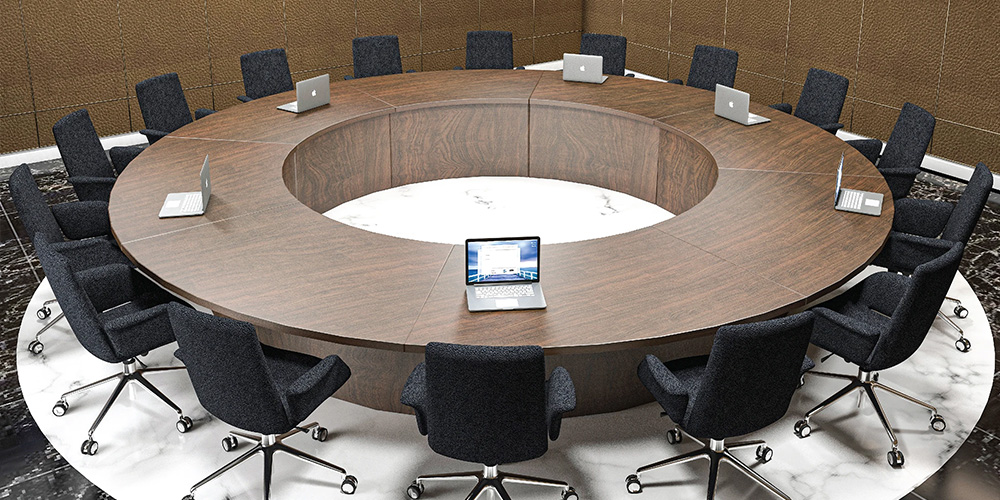
2.4. U-shaped tables – optimized for large group discussions
-
Key features: Modular U- or V-shaped layout, designed for visibility and presentations. Easy to assemble from multiple segments, often with integrated AV support.
-
Best suited for: Large meeting rooms, training centers, board meetings, or company-wide presentations.
U-shaped tables enhance communication by ensuring all participants face the speaker or screen. They are especially useful for hybrid meetings, where visibility to cameras is crucial. Their modular nature also allows for reconfiguration, making them versatile investments for multi-purpose rooms.
1.1. Shaping the overall design style
A conference table is often the largest piece of furniture in a meeting room. Its size, material, and color strongly influence the room’s visual balance and overall style. A poorly chosen table—whether too large, too small, or out of sync with the office concept—can make the room feel awkward and unprofessional. Conversely, the right table enhances harmony, reflects the brand’s identity, and creates a strong design statement. For example, tech startups may prefer sleek steel-frame wooden tables for a fresh, youthful look, while established corporations often choose veneer or stone-top tables to project authority and prestige.
1.2. Supporting functionality and user experience
Modern workplaces demand more than just a surface to sit around. Today’s conference tables are expected to integrate power outlets, cable management systems, and sometimes even audio-visual tools. This ensures meetings flow smoothly without distractions from tangled wires or lack of connectivity. A thoughtfully designed table directly impacts user comfort, enabling employees and executives to focus on collaboration instead of struggling with logistics.
1.3. Enhancing brand value and creating lasting impressions
Clients and partners often judge a company’s professionalism through their experience in the meeting room. A conference table that looks refined and supports functionality sends a clear message: the company invests in both people and workplace quality. On the other hand, outdated or cluttered setups risk undermining credibility. Investing in a modern table is therefore not just about aesthetics but also about strengthening brand perception.

2. Top 5 conference table models for every office concept
2.1. Steel-frame wood-top tables – modern and minimalist
-
Key features: Powder-coated steel frame with a sturdy yet lightweight structure, paired with a melamine-coated engineered wood top that resists scratches and stains.
-
Best suited for: Modern, minimalist offices, tech startups, creative agencies, and flexible workspaces.
This model offers an affordable balance of durability and sleekness. It works especially well when paired with ergonomic chairs, mesh office chairs, or stackable meeting chairs. The minimalist look ensures it adapts seamlessly to different interior themes without overwhelming the space.

2.2. Elliptical veneer tables – sophisticated and elegant
-
Key features: Natural wood veneer top with finely crafted curves, sturdy chrome or wooden legs, and often integrated cable ports.
-
Best suited for: Executive meeting rooms, boardrooms, and corporate offices aiming for a refined aesthetic.
Elliptical tables bring a sense of flow and openness. Unlike rigid rectangular tables, their curved edges encourage dialogue and soften the overall look of the room. Veneer finishes elevate the table’s appearance, giving it a premium touch while retaining warmth and approachability.
2.3. Round conference tables – inclusive and team-oriented
-
Key features: Compact round design, usually with a diameter of 1.2m to 1.6m, suitable for small groups.
-
Best suited for: Startups, coworking spaces, or informal team hubs where collaboration is key.
Round tables break hierarchy by eliminating head-of-table positions, symbolizing equality and open exchange. They are excellent for brainstorming sessions, project discussions, or quick catch-ups. Their small footprint also makes them ideal for offices with limited space while still fostering engagement.

2.4. U-shaped tables – optimized for large group discussions
-
Key features: Modular U- or V-shaped layout, designed for visibility and presentations. Easy to assemble from multiple segments, often with integrated AV support.
-
Best suited for: Large meeting rooms, training centers, board meetings, or company-wide presentations.
U-shaped tables enhance communication by ensuring all participants face the speaker or screen. They are especially useful for hybrid meetings, where visibility to cameras is crucial. Their modular nature also allows for reconfiguration, making them versatile investments for multi-purpose rooms.
A conference table is often the largest piece of furniture in a meeting room. Its size, material, and color strongly influence the room’s visual balance and overall style. A poorly chosen table—whether too large, too small, or out of sync with the office concept—can make the room feel awkward and unprofessional. Conversely, the right table enhances harmony, reflects the brand’s identity, and creates a strong design statement. For example, tech startups may prefer sleek steel-frame wooden tables for a fresh, youthful look, while established corporations often choose veneer or stone-top tables to project authority and prestige.
1.2. Supporting functionality and user experience
Modern workplaces demand more than just a surface to sit around. Today’s conference tables are expected to integrate power outlets, cable management systems, and sometimes even audio-visual tools. This ensures meetings flow smoothly without distractions from tangled wires or lack of connectivity. A thoughtfully designed table directly impacts user comfort, enabling employees and executives to focus on collaboration instead of struggling with logistics.
1.3. Enhancing brand value and creating lasting impressions
Clients and partners often judge a company’s professionalism through their experience in the meeting room. A conference table that looks refined and supports functionality sends a clear message: the company invests in both people and workplace quality. On the other hand, outdated or cluttered setups risk undermining credibility. Investing in a modern table is therefore not just about aesthetics but also about strengthening brand perception.

2. Top 5 conference table models for every office concept
2.1. Steel-frame wood-top tables – modern and minimalist
-
Key features: Powder-coated steel frame with a sturdy yet lightweight structure, paired with a melamine-coated engineered wood top that resists scratches and stains.
-
Best suited for: Modern, minimalist offices, tech startups, creative agencies, and flexible workspaces.
This model offers an affordable balance of durability and sleekness. It works especially well when paired with ergonomic chairs, mesh office chairs, or stackable meeting chairs. The minimalist look ensures it adapts seamlessly to different interior themes without overwhelming the space.

2.2. Elliptical veneer tables – sophisticated and elegant
-
Key features: Natural wood veneer top with finely crafted curves, sturdy chrome or wooden legs, and often integrated cable ports.
-
Best suited for: Executive meeting rooms, boardrooms, and corporate offices aiming for a refined aesthetic.
Elliptical tables bring a sense of flow and openness. Unlike rigid rectangular tables, their curved edges encourage dialogue and soften the overall look of the room. Veneer finishes elevate the table’s appearance, giving it a premium touch while retaining warmth and approachability.
2.3. Round conference tables – inclusive and team-oriented
-
Key features: Compact round design, usually with a diameter of 1.2m to 1.6m, suitable for small groups.
-
Best suited for: Startups, coworking spaces, or informal team hubs where collaboration is key.
Round tables break hierarchy by eliminating head-of-table positions, symbolizing equality and open exchange. They are excellent for brainstorming sessions, project discussions, or quick catch-ups. Their small footprint also makes them ideal for offices with limited space while still fostering engagement.

2.4. U-shaped tables – optimized for large group discussions
-
Key features: Modular U- or V-shaped layout, designed for visibility and presentations. Easy to assemble from multiple segments, often with integrated AV support.
-
Best suited for: Large meeting rooms, training centers, board meetings, or company-wide presentations.
U-shaped tables enhance communication by ensuring all participants face the speaker or screen. They are especially useful for hybrid meetings, where visibility to cameras is crucial. Their modular nature also allows for reconfiguration, making them versatile investments for multi-purpose rooms.
Modern workplaces demand more than just a surface to sit around. Today’s conference tables are expected to integrate power outlets, cable management systems, and sometimes even audio-visual tools. This ensures meetings flow smoothly without distractions from tangled wires or lack of connectivity. A thoughtfully designed table directly impacts user comfort, enabling employees and executives to focus on collaboration instead of struggling with logistics.
1.3. Enhancing brand value and creating lasting impressions
Clients and partners often judge a company’s professionalism through their experience in the meeting room. A conference table that looks refined and supports functionality sends a clear message: the company invests in both people and workplace quality. On the other hand, outdated or cluttered setups risk undermining credibility. Investing in a modern table is therefore not just about aesthetics but also about strengthening brand perception.

2. Top 5 conference table models for every office concept
2.1. Steel-frame wood-top tables – modern and minimalist
-
Key features: Powder-coated steel frame with a sturdy yet lightweight structure, paired with a melamine-coated engineered wood top that resists scratches and stains.
-
Best suited for: Modern, minimalist offices, tech startups, creative agencies, and flexible workspaces.
This model offers an affordable balance of durability and sleekness. It works especially well when paired with ergonomic chairs, mesh office chairs, or stackable meeting chairs. The minimalist look ensures it adapts seamlessly to different interior themes without overwhelming the space.

2.2. Elliptical veneer tables – sophisticated and elegant
-
Key features: Natural wood veneer top with finely crafted curves, sturdy chrome or wooden legs, and often integrated cable ports.
-
Best suited for: Executive meeting rooms, boardrooms, and corporate offices aiming for a refined aesthetic.
Elliptical tables bring a sense of flow and openness. Unlike rigid rectangular tables, their curved edges encourage dialogue and soften the overall look of the room. Veneer finishes elevate the table’s appearance, giving it a premium touch while retaining warmth and approachability.
2.3. Round conference tables – inclusive and team-oriented
-
Key features: Compact round design, usually with a diameter of 1.2m to 1.6m, suitable for small groups.
-
Best suited for: Startups, coworking spaces, or informal team hubs where collaboration is key.
Round tables break hierarchy by eliminating head-of-table positions, symbolizing equality and open exchange. They are excellent for brainstorming sessions, project discussions, or quick catch-ups. Their small footprint also makes them ideal for offices with limited space while still fostering engagement.

2.4. U-shaped tables – optimized for large group discussions
-
Key features: Modular U- or V-shaped layout, designed for visibility and presentations. Easy to assemble from multiple segments, often with integrated AV support.
-
Best suited for: Large meeting rooms, training centers, board meetings, or company-wide presentations.
U-shaped tables enhance communication by ensuring all participants face the speaker or screen. They are especially useful for hybrid meetings, where visibility to cameras is crucial. Their modular nature also allows for reconfiguration, making them versatile investments for multi-purpose rooms.
Clients and partners often judge a company’s professionalism through their experience in the meeting room. A conference table that looks refined and supports functionality sends a clear message: the company invests in both people and workplace quality. On the other hand, outdated or cluttered setups risk undermining credibility. Investing in a modern table is therefore not just about aesthetics but also about strengthening brand perception.

2. Top 5 conference table models for every office concept
2.1. Steel-frame wood-top tables – modern and minimalist
-
Key features: Powder-coated steel frame with a sturdy yet lightweight structure, paired with a melamine-coated engineered wood top that resists scratches and stains.
-
Best suited for: Modern, minimalist offices, tech startups, creative agencies, and flexible workspaces.
This model offers an affordable balance of durability and sleekness. It works especially well when paired with ergonomic chairs, mesh office chairs, or stackable meeting chairs. The minimalist look ensures it adapts seamlessly to different interior themes without overwhelming the space.

2.2. Elliptical veneer tables – sophisticated and elegant
-
Key features: Natural wood veneer top with finely crafted curves, sturdy chrome or wooden legs, and often integrated cable ports.
-
Best suited for: Executive meeting rooms, boardrooms, and corporate offices aiming for a refined aesthetic.
Elliptical tables bring a sense of flow and openness. Unlike rigid rectangular tables, their curved edges encourage dialogue and soften the overall look of the room. Veneer finishes elevate the table’s appearance, giving it a premium touch while retaining warmth and approachability.
2.3. Round conference tables – inclusive and team-oriented
-
Key features: Compact round design, usually with a diameter of 1.2m to 1.6m, suitable for small groups.
-
Best suited for: Startups, coworking spaces, or informal team hubs where collaboration is key.
Round tables break hierarchy by eliminating head-of-table positions, symbolizing equality and open exchange. They are excellent for brainstorming sessions, project discussions, or quick catch-ups. Their small footprint also makes them ideal for offices with limited space while still fostering engagement.

2.4. U-shaped tables – optimized for large group discussions
-
Key features: Modular U- or V-shaped layout, designed for visibility and presentations. Easy to assemble from multiple segments, often with integrated AV support.
-
Best suited for: Large meeting rooms, training centers, board meetings, or company-wide presentations.
U-shaped tables enhance communication by ensuring all participants face the speaker or screen. They are especially useful for hybrid meetings, where visibility to cameras is crucial. Their modular nature also allows for reconfiguration, making them versatile investments for multi-purpose rooms.
2.1. Steel-frame wood-top tables – modern and minimalist
-
Key features: Powder-coated steel frame with a sturdy yet lightweight structure, paired with a melamine-coated engineered wood top that resists scratches and stains.
-
Best suited for: Modern, minimalist offices, tech startups, creative agencies, and flexible workspaces.
This model offers an affordable balance of durability and sleekness. It works especially well when paired with ergonomic chairs, mesh office chairs, or stackable meeting chairs. The minimalist look ensures it adapts seamlessly to different interior themes without overwhelming the space.

2.2. Elliptical veneer tables – sophisticated and elegant
-
Key features: Natural wood veneer top with finely crafted curves, sturdy chrome or wooden legs, and often integrated cable ports.
-
Best suited for: Executive meeting rooms, boardrooms, and corporate offices aiming for a refined aesthetic.
Elliptical tables bring a sense of flow and openness. Unlike rigid rectangular tables, their curved edges encourage dialogue and soften the overall look of the room. Veneer finishes elevate the table’s appearance, giving it a premium touch while retaining warmth and approachability.
2.3. Round conference tables – inclusive and team-oriented
-
Key features: Compact round design, usually with a diameter of 1.2m to 1.6m, suitable for small groups.
-
Best suited for: Startups, coworking spaces, or informal team hubs where collaboration is key.
Round tables break hierarchy by eliminating head-of-table positions, symbolizing equality and open exchange. They are excellent for brainstorming sessions, project discussions, or quick catch-ups. Their small footprint also makes them ideal for offices with limited space while still fostering engagement.

2.4. U-shaped tables – optimized for large group discussions
-
Key features: Modular U- or V-shaped layout, designed for visibility and presentations. Easy to assemble from multiple segments, often with integrated AV support.
-
Best suited for: Large meeting rooms, training centers, board meetings, or company-wide presentations.
U-shaped tables enhance communication by ensuring all participants face the speaker or screen. They are especially useful for hybrid meetings, where visibility to cameras is crucial. Their modular nature also allows for reconfiguration, making them versatile investments for multi-purpose rooms.
-
Key features: Powder-coated steel frame with a sturdy yet lightweight structure, paired with a melamine-coated engineered wood top that resists scratches and stains.
-
Best suited for: Modern, minimalist offices, tech startups, creative agencies, and flexible workspaces.
This model offers an affordable balance of durability and sleekness. It works especially well when paired with ergonomic chairs, mesh office chairs, or stackable meeting chairs. The minimalist look ensures it adapts seamlessly to different interior themes without overwhelming the space.

2.2. Elliptical veneer tables – sophisticated and elegant
-
Key features: Natural wood veneer top with finely crafted curves, sturdy chrome or wooden legs, and often integrated cable ports.
-
Best suited for: Executive meeting rooms, boardrooms, and corporate offices aiming for a refined aesthetic.
Elliptical tables bring a sense of flow and openness. Unlike rigid rectangular tables, their curved edges encourage dialogue and soften the overall look of the room. Veneer finishes elevate the table’s appearance, giving it a premium touch while retaining warmth and approachability.
2.3. Round conference tables – inclusive and team-oriented
-
Key features: Compact round design, usually with a diameter of 1.2m to 1.6m, suitable for small groups.
-
Best suited for: Startups, coworking spaces, or informal team hubs where collaboration is key.
Round tables break hierarchy by eliminating head-of-table positions, symbolizing equality and open exchange. They are excellent for brainstorming sessions, project discussions, or quick catch-ups. Their small footprint also makes them ideal for offices with limited space while still fostering engagement.

2.4. U-shaped tables – optimized for large group discussions
-
Key features: Modular U- or V-shaped layout, designed for visibility and presentations. Easy to assemble from multiple segments, often with integrated AV support.
-
Best suited for: Large meeting rooms, training centers, board meetings, or company-wide presentations.
U-shaped tables enhance communication by ensuring all participants face the speaker or screen. They are especially useful for hybrid meetings, where visibility to cameras is crucial. Their modular nature also allows for reconfiguration, making them versatile investments for multi-purpose rooms.
-
Key features: Natural wood veneer top with finely crafted curves, sturdy chrome or wooden legs, and often integrated cable ports.
-
Best suited for: Executive meeting rooms, boardrooms, and corporate offices aiming for a refined aesthetic.
Elliptical tables bring a sense of flow and openness. Unlike rigid rectangular tables, their curved edges encourage dialogue and soften the overall look of the room. Veneer finishes elevate the table’s appearance, giving it a premium touch while retaining warmth and approachability.
2.3. Round conference tables – inclusive and team-oriented
-
Key features: Compact round design, usually with a diameter of 1.2m to 1.6m, suitable for small groups.
-
Best suited for: Startups, coworking spaces, or informal team hubs where collaboration is key.
Round tables break hierarchy by eliminating head-of-table positions, symbolizing equality and open exchange. They are excellent for brainstorming sessions, project discussions, or quick catch-ups. Their small footprint also makes them ideal for offices with limited space while still fostering engagement.

2.4. U-shaped tables – optimized for large group discussions
-
Key features: Modular U- or V-shaped layout, designed for visibility and presentations. Easy to assemble from multiple segments, often with integrated AV support.
-
Best suited for: Large meeting rooms, training centers, board meetings, or company-wide presentations.
U-shaped tables enhance communication by ensuring all participants face the speaker or screen. They are especially useful for hybrid meetings, where visibility to cameras is crucial. Their modular nature also allows for reconfiguration, making them versatile investments for multi-purpose rooms.
-
Key features: Compact round design, usually with a diameter of 1.2m to 1.6m, suitable for small groups.
-
Best suited for: Startups, coworking spaces, or informal team hubs where collaboration is key.
Round tables break hierarchy by eliminating head-of-table positions, symbolizing equality and open exchange. They are excellent for brainstorming sessions, project discussions, or quick catch-ups. Their small footprint also makes them ideal for offices with limited space while still fostering engagement.

2.4. U-shaped tables – optimized for large group discussions
-
Key features: Modular U- or V-shaped layout, designed for visibility and presentations. Easy to assemble from multiple segments, often with integrated AV support.
-
Best suited for: Large meeting rooms, training centers, board meetings, or company-wide presentations.
U-shaped tables enhance communication by ensuring all participants face the speaker or screen. They are especially useful for hybrid meetings, where visibility to cameras is crucial. Their modular nature also allows for reconfiguration, making them versatile investments for multi-purpose rooms.
-
Key features: Modular U- or V-shaped layout, designed for visibility and presentations. Easy to assemble from multiple segments, often with integrated AV support.
-
Best suited for: Large meeting rooms, training centers, board meetings, or company-wide presentations.
U-shaped tables enhance communication by ensuring all participants face the speaker or screen. They are especially useful for hybrid meetings, where visibility to cameras is crucial. Their modular nature also allows for reconfiguration, making them versatile investments for multi-purpose rooms.
